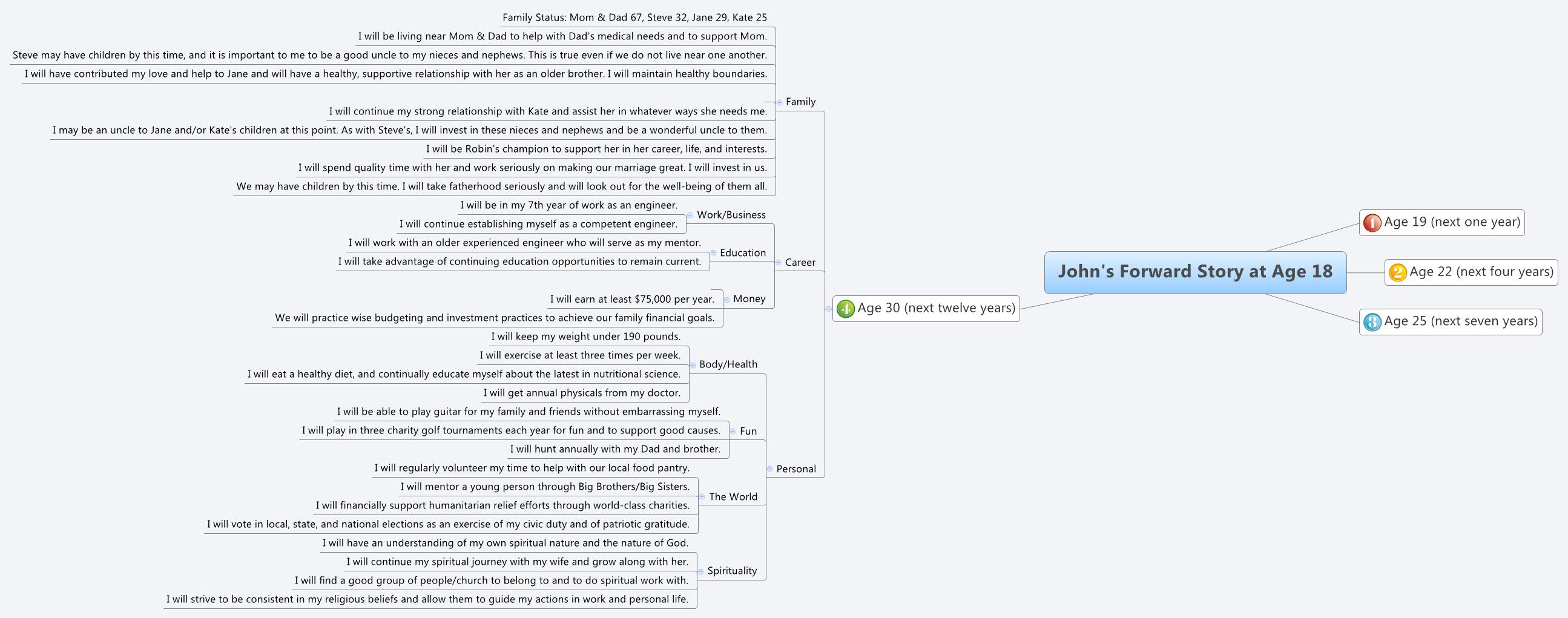
http://www.stockfreeimages.com/
I made a commitment several years ago to revise and update my personal Forward Story at the beginning of each year. Experience teaches me that in order for my Forward Story to be a powerful tool for living and action, I need to regularly update it. This is why each of my Forward Stories has an “as of” date:
Mark’s Forward Story as of January 1, 2013
These two little words remind me that the story contained in the following pages represents my vision for the future as it existed at a set point in time. To me a new year, even though it is just a function of human calendars, is like standing on a mountain and looking out over a long view. It is a great place and time from which to do some visionary work.
Given that we are in the first month of a new year, I am putting the finishing touches on my revised Forward Story. I wanted to take a brief break from the revision to answer the question:
Why does my Forward Story need to be updated regularly?
- My plans for the future change as I grow older. I no longer see the world or my future the same way I did when I was younger — even one year younger. To be honest about the future I now envision as a more mature person, I have to take a fresh look at what I hope for now given where I am. I sometimes look at my older Forward Stories from years ago and marvel that that young man valued different things than this older man now values.
- My circumstances change from time-to-time requiring a fresh look. One of my previous revisions in the area of health expressed the desire to reach a certain weight by this point in time and to maintain that weight into the future. The truth is that I have now lost below that original target weight. Now that my vantage point has changed with regard to that goal, I am now revising my goal lower because I am convinced I can get even healthier. The same is true for family and career domains as well as health. Sometimes the revision goes the other way. Perhaps I have not reached a goal, and I revise my desire with regard to that goal. I may restate it, eliminate it, or attack it a different way.
An amazing exercise is to go back and review previous Forward Stories. Over time they tell quite a “back story” about my life. As I read the hopes, dreams, and plans of my younger self, I see what authors and storytellers call a “character arc.” I can see the way my life has changed from inside of my thinking in those earlier timeframes. I highly recommend it.
I will admit that doing the annual revision can be a bit of a tedious task, but I have developed some helpful tools that make the task a bit more fun and effective. I will be sharing those tools in future posts.















